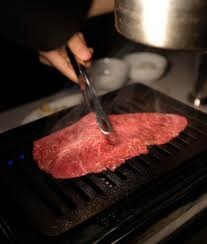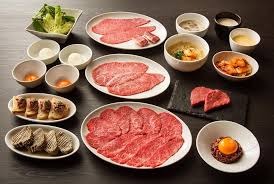Check! | 5 Must-Do's in Tokyo
- CheckMATE
- Nov 9, 2020
- 6 min read
Updated: Mar 14, 2021
I do a lot of business travel. So while I most certainly have the best of intentions to spend a few days carefully and thoroughly exploring the cities I visit... my work schedule often ruins all my beautiful plans. Because of this, I like to create short "check-lists" for my travels. These are things that I not only must do, but these are things that won't take up a whole day for me to check off.
Here's my checklist for first-timers in Tokyo:
Eat! Eat! Eat!
Visit a park (tea ceremony, hanami or momijigari)
Keep up with the busyness of Shibuya
Experience the traditional at Meiji Jingu
Shop, eat, drink, live in Ginza
(1) Eat! Eat! Eat!

[Credit: Live Japan}
Tokyo is one of greatest food cities in the world! There's so much to eat - sushi, ramen, soba, udon, tempura, yakitori, sukiyaki, tonkatsu, yakiniku, mochi, omurice, okonomiyaki... the list goes on and on and on. While you most certainly don't have to plan your entire travel itinerary around food (although we all know by now that I do), you most certainly should spend some time thinking about it and planning a meal or two in advance. Even if it isn't a fancy meal - you may want to plan your meals just to make sure that you arrive at the right time to minimize wait-times.
In case you need some inspiration, here are some of my favorites:
Tempura: Kikuya Tempura
Ramen: Ginza Kagari Honten
Yakitori: Jomon Roppongi
Sushi: Ginza Iwa
Souffle pancake: A Happy Pancake
(2) Visit a park
Japanese gardens are immaculate. Even in one of the world's busiest, most digitally advanced cities in the world - there are plenty of gardens and parks that you can escape to. Take a morning stroll through the park, or sit down at a Japanese tea-house to really take in the serenity. Kiyosumi Garden is a traditional Japanese garden complete with a pond and Japanese teahouse. The garden is organized so that visitors are led on a picturesque stroll around the water’s edge. The Imperial Palace East Garden is open to the public free of charge all year-round. The gardens are beautifully landscaped and there is a museum that sells postcards and trinkets as souvenirs.

[Credit: Go Tokyo]
If you're in Tokyo for the spring - make sure to go see the cherry blossoms ("hanami"). With more than a thousand trees, free admission, and night lights... Ueno Park is one of the most popular hanami spots in Tokyo. Shinjuku Gyoen is home to dozens of species of cherry tree, totaling more than 1,000 trees in all. Because of the great variety, you can enjoy blossoms in Shinjuku even if you are a week early or late for Tokyo’s full bloom. And for a few weeks during the hanami (cherry blossoms) in spring, and during the koyo (autumn leaves) in November, the garden of the Tokyo National Museum opens to the public. On the grounds are five antique teahouses brought here from all around Japan.

[credit: JW]
If you're there for the fall, go for "momijigari." Momijigari, or admiring the autumn leaves, is a custom that has been practiced for centuries. There are many parks that open at night specifically for this. Rikugien Garden is highly popular during autumn leaves season, and the special light-up for trees is held at night from late November to mid December annually. Happo-en has a “TOKYO RED GARDEN AUTUMN FESTIVAL” that features live music and light-up for autumn leaves at the garden. Over 100 maple trees and the Japanese garden will be illuminated by red lights and lanterns.
(3) Keep up with the busyness of Shibuya
You've probably inevitably seen a picture of Shibuya - with all the neon signs, and what feels like a million people crossing the same intersection at the same time. Shibuya Crossing is probably one the most famous intersections in the world. It is located in front of the Shibuya Station Hachiko exit and stops vehicles in all directions to allow pedestrians to inundate the entire intersection. Make sure you have your phone ready to take some cool videos!
[credit: Go Tokyo, Matcha]
When there, make sure you go say 'hi' to Hachiko. The statue of Hachiko, between the station and the intersection. In 1924, Professor Ueno of Tokyo University adopted Hachiko as a puppy. Every morning Ueno went to Shibuya station on his commute, and Hachiko would follow. At night, Hachiko would meet Professor Ueno at the exact time his work ended. Tragically, Professor Ueno suddenly passed away while at work. Hachiko waited for Ueno’s return at Shibuya station every night for the remainder of his life. This statue was raised in honor of the very loyal Hachiko.
Of course, there's plenty of shopping to do in Shibuya. The Shibuya 109 department store is one of the most popular places for young Tokyoites to shop. There's also a 9-stories tall, Tower Records (for those of you that remember what it was like to walk into a store and buy a physical CD).
There is no shortage of food and drinks in Shibuya. Shibuya’s Center Gai is a for-pedestrian-only narrow street lined with bars, shops, and nightclubs. This particular area is popular with Japanese youth and subculture hipsters, so you’re sure to see some of that funky fashion and lively spirit you've seen in movies! For food and drinks, head to Nonbei Yokocho - also known as ‘Drunkard’s Alley.’ There are plenty of tiny, some only seating four to five people, ramshackle bars to choose from along the narrow road.
For something less busy - head up to the Bello Visto Bar inside of Shibuya’s Cerulean Tower Hotel. Located 40 stories up, you can take in the Tokyo night-scape over a glass of rare and exclusive spirits.
(4) Experience the traditional at Meiji Jingu
Traveling in a crowded city with millions of people can sometimes things can get a bit exhausting and overwhelming. Luckily, Tokyo has many places which can offer a respite from the hustle and bustle of city life! One of my favorite places to go to is Meiji Jingu. Whether it's the first or the tenth time I'm there, I'm always amazed at how my entire world seems to change the moment I step across the street and into the forest. Instantly, I am transported to a different world that feels a million miles away! All the sights and sounds of the busy city, as well as all my worries, seem to instantly fade away!

[credit: japan-guide]
When you enter Meiji Jingu through the South side (across from Harajuku Station), you are welcomed at the entrance by a large wooden Torii gate as well as a large wall of sake barrels along the side. Walk along the path that's lined with the lush, towering trees (approx. 100,000 trees are in this park!!!) and it'll lead you to the main courtyard of the Meiji Shrine.
As with any Shinto Shrine, you'll be met with the temizuya (or chozuya), which is the small pavilion with flowing water to purify your body before entering. The common practice is to take the wooden dipper to pour a bit of water into your left hand and then your right hand. You can also rinse your mouth by sipping from your hand and then spitting it out at the basin, before finally washing the handle of the dipper itself (Post-COVID protocols may have banned all of this). At the shrine, you can partake in a number of activities including making offerings at the main hall, buying charms or amulets, or writing your wish on an ema, or wooden tablet (other places have omikuji, or fortune telling paper, which you can tie to a tree). It's believed to bring good luck and will make your wish come true!
(5) Shop, eat, drink, live in Ginza
Ginza is my favorite place in Tokyo. Hands-down. What's not to love about an area that has ritzy cocktails, sushi bars, the famous Chuo-dori shopping promenade and traditional Japanese dance and drama at the landmark Kabuki-za theatre!
[credit: Go Tokyo, Urban Capture, TimeOut]
Chuo-dori is Ginza's most exclusive and affluent shopping area. It is a shopper’s paradise. Running north to south through the centre of the district, the street becomes a pedestrianized promenade on the weekends as it's completely closed to traffic every weekend from 12pm to 5pm. Ginza Six, a stylish and architecturally impressive building and the neighbourhood’s largest department store, with some 241 shops under one roof is a popular spot to go. Further up the street are Mitsukoshi and Matsuya, two of Japan’s most famous department chain stores. Tokyu Plaza Ginza on Nishiginza-dori street is yet another swanky department store with a great open rooftop offering sweeping views of the city. Even if you can't afford the high-end fashion - make sure you come here to people watch.
On the east side of Ginza is the famous Kabuki-za Theatre, where you can watch kabuki (classic colorful, lively Japanese dance). Japanese restaurants are located inside the theatre and available for dining during the intermission (usually 20 - 30 minutes). Due to the limited number of seats in each restaurant, reservation is highly recommended (no later than 2 days before the day you attend the performance. You can purchase Single Act Tickets on the day of the performance without reservations directly at the Box Office located on the ground level of the Kabukiza Theatre.
There is just too much to talk about when it comes to the food and drinks in Ginza. All the things I listed in #1 above... you can get at Ginza. My personal favorite: Ushigoro Bambina Ginza. Absolutely divine pieces of Wagyu beef grilled in front of you in a classy (but not at all stuffy) setting! Make sure you stop by one of the many famous cocktail bars in the area!
[credit: EATadakimasu, Ushigoro, Gyl Magazine, TimeOut]




























Comments